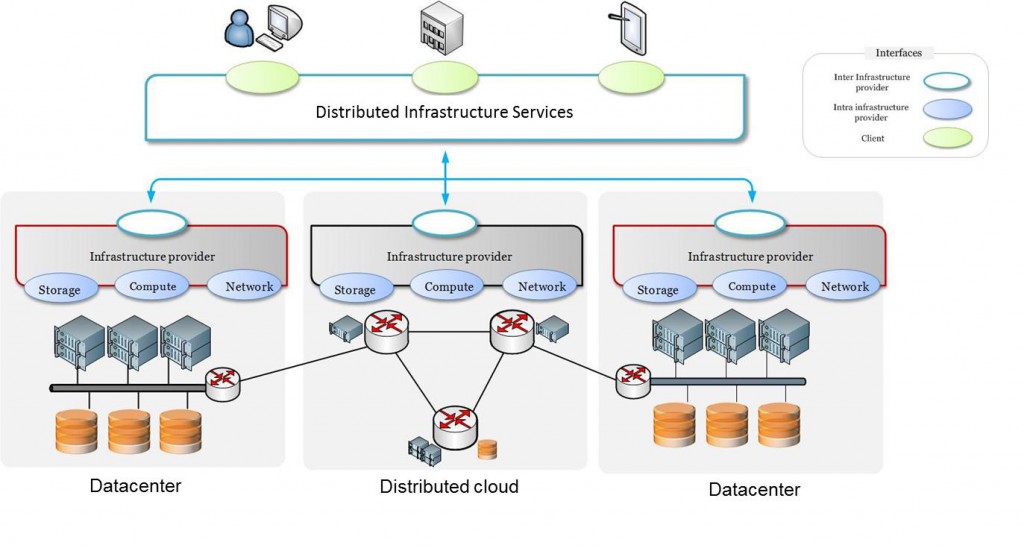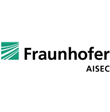Below is the 3rd quarterly newsletter from the SAIL project. A printable, PDF, version of the SAIL newsletter #3 can be downloaded here.
You may subscribe to the quarterly newsletters from SAIL by entering your email address in the form below.
————————————————————————————————————————————————-
SAIL Project Newsletter, issue #3 – June 2011
Editor: Luis M. Correia
1. Editorial
With 30% of the project months passed, we have a bright outlook for our remaining voyage. There is an intense work on-going in all Work Packages (WPs) and Themes, and we have a tightly united team with a willingness to cooperate at everyone’s best. “Everyone” in SAIL terms now mean 25 partners, as we are welcoming Lyatiss as new partner in the consortium!
The second General Meeting of SAIL was held in Santander, Spain, 21-23 February, where the beautiful Palacio de la Magdalena was overtaken by SAILors for three days. The organiser of this successful meeting was University of Cantabria. During these days, the ground for the upcoming intense work on the architectural deliverables from the respective WP was laid. The work with these deliverables is now in its most intense phase, and each WP has had or is in the preparation phase for dedicated face-to-face meetings.
Prototyping and the other Themes of the project will be the unifying glue that brings the technical aspects of NetInf, CloNe and OConS together, and leverage the added value that comes with an Integrated Project. During the Santander meeting, this became evident at the extremely well populated Prototyping Theme meeting.
Our first review meeting was held March 17th in good and constructive spirit, resulting in a lot of good discussions, valid comments and some remarks. The received feedback is taken in, and is now implemented into our project work plan.
We are now approaching summer and a much longed for vacation period for most of us. “Summer” for most of us usually contains references to “clear skies” in one way or another. Call it a paradox if you like, that in this issue of our newsletter we will challenge that conception by taking a jump up into the clouds while exploring the exciting area of Cloud Networking! You will learn why distributed Clouds, residing at arm’s lengths from us, will be a key ingredient of the future Internet.
So, let the sun wait for a while and enjoy the Clouds!
Thomas Edwall
(Project Manager)
2. Under the Spotlight: Focus on WP-D – Cloud Networking
Cloud computing is today changing the way applications and software can be deployed and managed. The concept of on-demand and pay-per-use software services is highly attractive to large and small enterprises that wish to reduce IT costs. Through cloud computing, one is able to outsource the management of entire systems, letting companies focus on their core businesses.
The work in the Cloud Networking WP is centred on two premises. The first one is that in the near future we will have a distributed cloud, that is, a cloud deployed in the network and at network edges. This cloud will be closer to the end-user, minimising latency and maximising end-user experience. Not less importantly, that cloud will avoid congested network links, since the application will be placed close to the user.
The second premise is that applications that are currently deployed in data centres will need flexible, secure and high speed connections in “customer – data centre” and “data centre –data centre” links. The provisioning of those connections should be performed in a time scale that is compatible with the allocation of computing resources in a data centre. We call this flexible network service a flash network slice. We envision a pay-per-use model for this network service as well, which will enable small and medium enterprises to get access to those in an affordable way.
In that scenario, applications can be deployed in the network, in data centres, or in both at the same time. In order to allow that, the Cloud Networking architecture is designing a Distributed Infrastructure Service plane that will decompose and distribute applications across different administrative domains, e.g., data centres, and operators networks (figure above).
Recently, we presented our work in the Future Internet Assembly in Budapest, at a session named “The network lost in the cloud”. The one topic that seemed to be a consensus amongst all presenters was the need for a cloud end-to-end contract (in the form of an SLA) that includes networking. For example, the project GEYSERS uses optical networks to provide cloud connectivity. SAIL Cloud Networking is investigating the use of MPLS/BGP, OpenFlow and Virtual Networks to provide inter-cloud connectivity.
One of the interesting questions in that session was about the need for visibility into the networks. The project RESERVOIR has implemented a federation of clouds and without knowing what is happening in the networks, a little could be done when transfer of large datasets or VMs has to be performed. In SAIL, we foresee the network operator as being part of this eco-system, offering a network service. Thus, cloud providers do not need to have visibility into the network, rather, they will see a service that is offered by the network provider.
Yet another interesting aspect is the business implications of how we implement the Distributed Infrastructure Service. One possibility is the use of a centralised scheme, which knows the topology/status of all underlying providers. This scheme could make optimal decisions, but is unlikely to happen in practice, since providers are not willing to expose such type of information. The second possibility is through the use of distributed schemes, where each provider is treated as a black box with internal decision making. In that case, we can have one instance negotiating with all providers for a request (hierarchical model), or we can have fully distributed negotiation between providers for a given request (peering model). Both cases are part of CloNe’s architecture.
3. Inside SAIL: News from WPs and Themes
WP-A - Impact and Collaboration Enabling (ICE)
WP-A has now started the activities for the definition of a strategy for migration. SAIL’s contributions to ETSI’s Future Network Technologies Workshop are being coordinated by WP-A.
A paper presenting the main challenges within the project was accepted to a special call of IEEE Communications Magazine, to be issued July 2011. The project will participate with a booth at FuNeMS’2011. A presentation has been agreed to be given in the SESERV project workshop in June in Oxford (Building the Future Internet – the Social Nature of Technical Choices).
Work on Deliverable D.A.7 has continued, and the 1st full draft version will be ready by mid-May.
If you haven’t already, please visit Sailors Inn, the blog of SAIL. Since the last newsletter, there has been blog posts around the 2nd SAIL general meeting, some thoughts around the launch of Open Networking Foundation and a post from the first ASMONIA workshop. Visit the blog for even more interesting posts posted the last quarter.
You are also welcome to join the SAIL LinkedIn group, or to follow SAIL on Twitter. In both these fora, you can interact with us.
WP-B - Network of Information (NetInf)
WP-B is developing an Information-Centric Networking (ICN) architecture with a focus on support for heterogeneous technology and administrative domains. We are following an approach of defining fundamental architectural elements – instead of a comprehensive architecture that is imposed on all possible scenarios and networks. Following this approach, we are currently investigating the details of a minimal set of architecture elements.
One particular example is information object naming, which we consider a key element of the ICN thin hour glass waist. For naming, WP-B has developed the NetInf naming that can provide globally unique naming of objects with secure name to content binding. NetInf naming employs a URI format for representing NetInf names that provides the necessary flexibility to cater for different naming and security requirements in different domains. We have submitted the specification of our naming format to the IETF as draft-farrell-ni-00.
We have taken NetInf naming as one of the elementary building blocks for sketching a future information-centric “Internet of Things” in a contribution to a recent Interconnecting Smart Objects with the Internet Workshop organised by the IAB. In this workshop contribution, we presented the idea that an “Internet of Things” should not be treated as totally different network – instead accessing named information based on NetInf naming would be a 1st order principle for interconnecting all kinds of network, including networks of power-constrained or otherwise challenged devices.
WP-C - Open Connectivity Service (OConS)
The focus has been put on the Architectural Concepts of Connectivity Services deliverable, with the initial requirements in place, the design principles to follow, and the architectural framework drafted. This public OConS deliverable will also include the mechanisms for connectivity services and the management of these services, congregating contributions from WP-C partners around a common functional architecture.
We have also progressed with the experimentation and prototyping activities, intensifying our internal cooperation by clustering the prototyping activities into a common context for project-wide scenarios, demos and prototypes.
Finally, even if we salute the launch Open Networking Foundation, with OpenFlow as its flagship, we reckon that it is the high time to have scalable-by-design networking solutions enhanced with more advanced connectivity services, such as Multi-P*, Quality-of-Service, and why not Mobility.
WP-D - Cloud Networking (CloNe)
Under the spotlight in this issue.
Prototyping and Experimentation Theme
Currently, WPs are about to detail their specific prototyping activities for the first development and experimentation cycle that end in month 24. In parallel, the architectural framework with services and interfaces in each WP, as well as from a project-wide perspective, are being elaborated and documented in deliverables by July 2011. This will be the next main checkpoint for the Theme Prototyping and Experimentation to consolidate the cross-WP interactions and progress. In the meantime, requirements and support tools for an environment to manage, configure and visualise the planned demonstrations are under study.
Security Theme
As WPs continue to progress their technical ideas, we note that all of these technical proposals encompass specific security solutions to typically protect integrity or avoid misuse. Even though SAIL is not a security project, it would be a surprise if the WPs would not think of security. The security theme is now gathering these approaches, to ensure consistency, i.e., avoid contradictions or duplication of work. This approach and results will be documented and completed with security guidelines for SAIL in the upcoming deliverable D.A.2 “Draft Architectural Guidelines and Principles”.
4. Looking Outside - Views on SAIL
SAIL has got media coverage in the Swedish weekly technical newspaper Ny Teknik in terms of two articles with bearing on the SAIL-project. Both from an Ericsson-perspective, as overall coordinators of the project, and also one more specifically around our partner SICS’s involvement in SAIL.
Thomas Edwall and Börje Ohlman were interviewed as SAIL project manager and sub-project manager respectively. On Sailors Inn, a blog post is written that links to Google-translated versions of the articles.
The following papers have been accepted or published:
- Matteo D’Ambrosio, Christian Dannewitz, Holger Karl and Vinicio Vercellone, “MDHT: A Hierarchical Name Resolution Service for Information-centric Networks”, SIGCOMM 2011 – ICN workshop, Toronto, Canada, Aug. 2011.
- Bengt Ahlgren, Pedro Aranda, Prosper Chemouil, Luis M. Correia, Holger Karl, Sara Oueslati, Michael Söllner and Annikki Welin, “Content, Connectivity, and Cloud: Ingredients for the Network of the Future”, IEEE Communication Magazine, July 2011.
- Reuven Cohen and Guy Grebla, “Efficient allocation of CQI Channels in Broadband wireless Networks”, INFOCOM 2011, Shanghai, China, Apr. 2011.
- Rami Cohen and Danny Raz, “Cost Effective Resource Allocation of Overlay Routing Relay Nodes”, INFOCOM 2011, Shanghai, China, Apr. 2011.
- David Breitgand, Gilad Kutiel and Danny Raz, “Cost-aware live migration of services in the cloud”, Hot-ICE ’11, Boston, MA, USA, Mar. 2011.
- Dominique Dudkowski, “SAIL Cloud Networking”, ASMONIA Workshop, Heidelberg, Germany, Mar. 2011.
- Dirk Kutscher and Stephen Farrell, “Towards an Information-Centric Internet with more Thing”, Interconnecting Smart Objects with the Internet Workshop, Prague, Czech Republic, Mar. 2011.
5. What’s Next: Coming Events
SAIL will be participating in upcoming conferences and workshops:
- Future Network & Mobile Summit 2011, Warsaw, Poland, 15-17 June 2011.
- SIGCOMM 2011, Toronto, Canada, 15-19 Aug. 2011.
Some conferences have paper submission deadlines in the upcoming weeks:
- Capacity Sharing Workshop, Stuttgart, Germany, 13 Oct 2011. Deadline: 15 July 2011.
To Probe Further
For more information, go to the project website (http://www.sail-project.eu), or contact SAIL through the contact web page.
Visit also the project blog, http://sail-project.eu/sailorsinn.
































